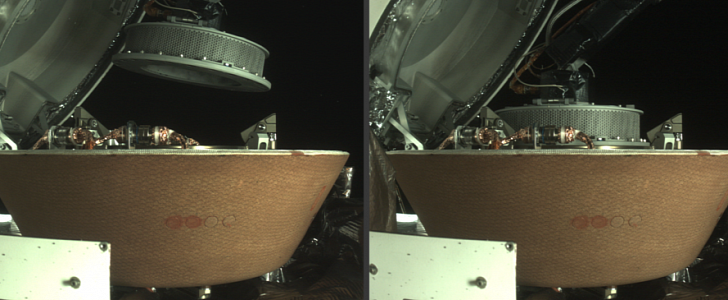With all the nasty things happening on our home world, we kind of lost track of an extraordinary mission taking place in space, more than 205 million miles (330 million km) away from Earth: OSIRIS-Rex, the small spacecraft sent back in 2018 to collect a sample from an asteroid, finally managed to stow the precious cargo inside its belly.
OSIRIS-REx stands for Origins, Spectral Interpretation, Resource Identification, Security-Regolith Explorer, and it’s goal is to pinch, collect, stow and come back to Earth with a sample of rock from a carbonaceous asteroid called Bennu.
And as of this month, most of those goals have been reached. On Wednesday (October 28) OSIRIS was commanded to close the capsule with the sample inside and start getting ready for its return trip back to Earth.
“This achievement by OSIRIS-REx on behalf of NASA and the world has lifted our vision to the higher things we can achieve together, as teams and nations,” said in a statement NASA Administrator Jim Bridenstine.
“Together a team comprising industry, academia and international partners, and a talented and diverse team of NASA employees with all types of expertise, has put us on course to vastly increase our collection on Earth of samples from space. Samples like this are going to transform what we know about our universe and ourselves, which is at the base of all NASA’s endeavors.”
To collect the asteroid sample, NASA used an instrument called TAGSAM (Touch-and-Go-Sample-Acquisition-Mechanism. The articulated arm is equipped with a round sampler at its top, and a nitrogen gas canister. The canister was used to make dust and pebbles rise and enter the sampler.
The return trip window for the OSIRIS spacecraft opens in March 2021. As for the asteroid, it too might visit Earth, as it has a cumulative 1-in-2,700 chance of impacting Earth between the years 2175 and 2199.
And as of this month, most of those goals have been reached. On Wednesday (October 28) OSIRIS was commanded to close the capsule with the sample inside and start getting ready for its return trip back to Earth.
“This achievement by OSIRIS-REx on behalf of NASA and the world has lifted our vision to the higher things we can achieve together, as teams and nations,” said in a statement NASA Administrator Jim Bridenstine.
“Together a team comprising industry, academia and international partners, and a talented and diverse team of NASA employees with all types of expertise, has put us on course to vastly increase our collection on Earth of samples from space. Samples like this are going to transform what we know about our universe and ourselves, which is at the base of all NASA’s endeavors.”
To collect the asteroid sample, NASA used an instrument called TAGSAM (Touch-and-Go-Sample-Acquisition-Mechanism. The articulated arm is equipped with a round sampler at its top, and a nitrogen gas canister. The canister was used to make dust and pebbles rise and enter the sampler.
The return trip window for the OSIRIS spacecraft opens in March 2021. As for the asteroid, it too might visit Earth, as it has a cumulative 1-in-2,700 chance of impacting Earth between the years 2175 and 2199.

